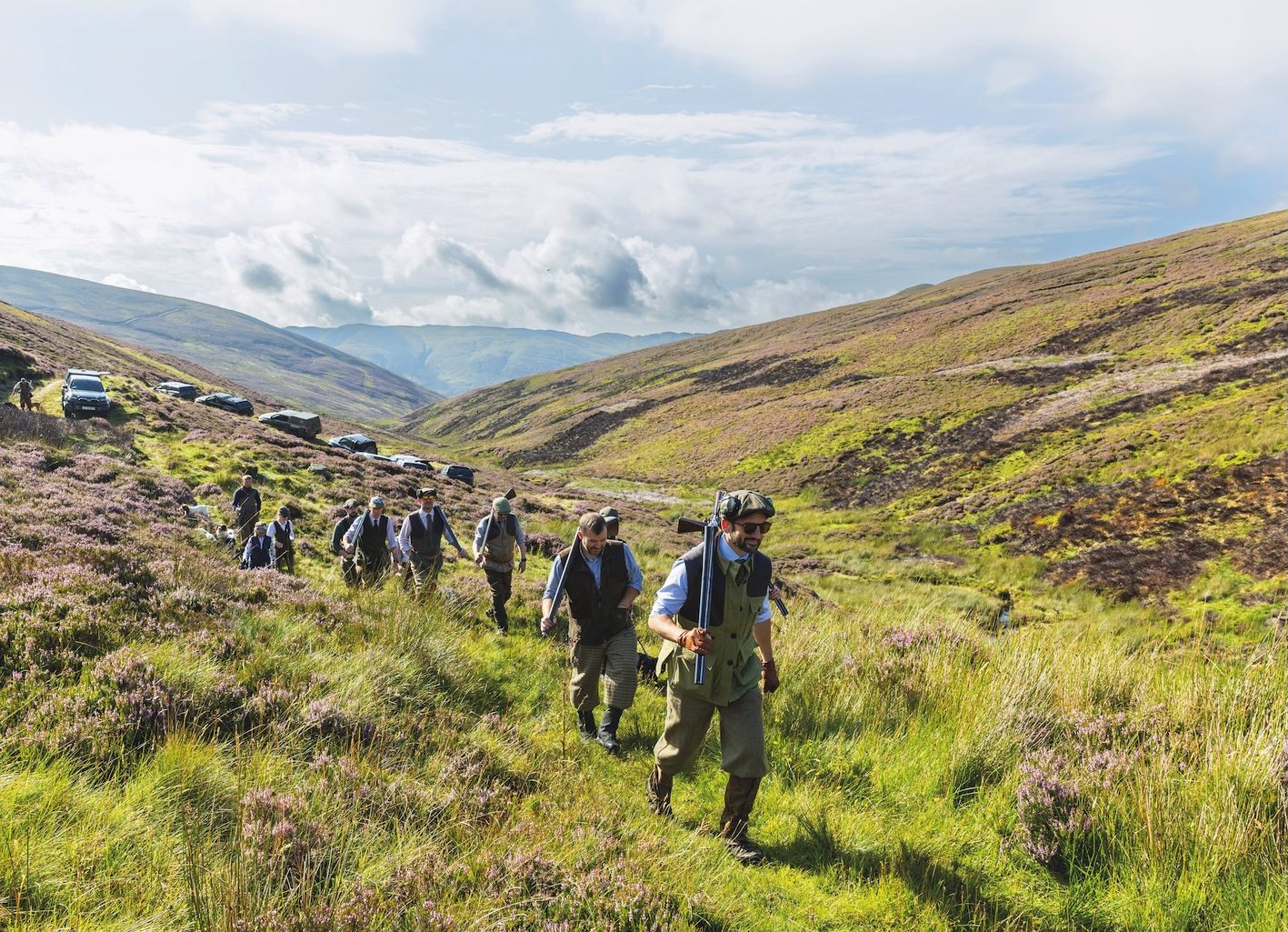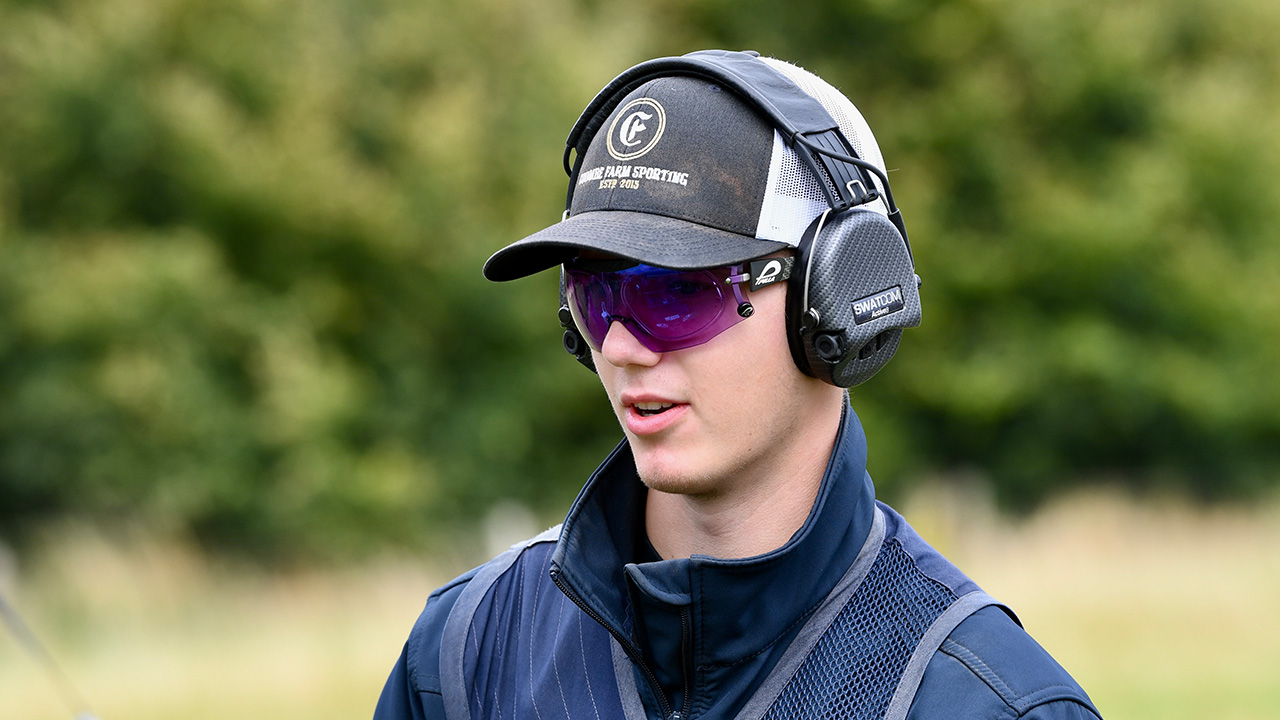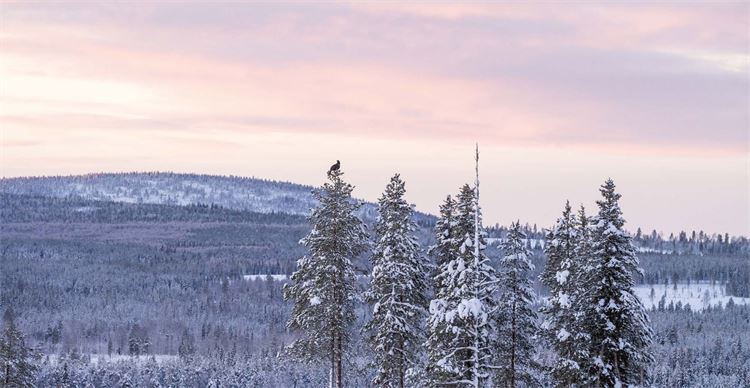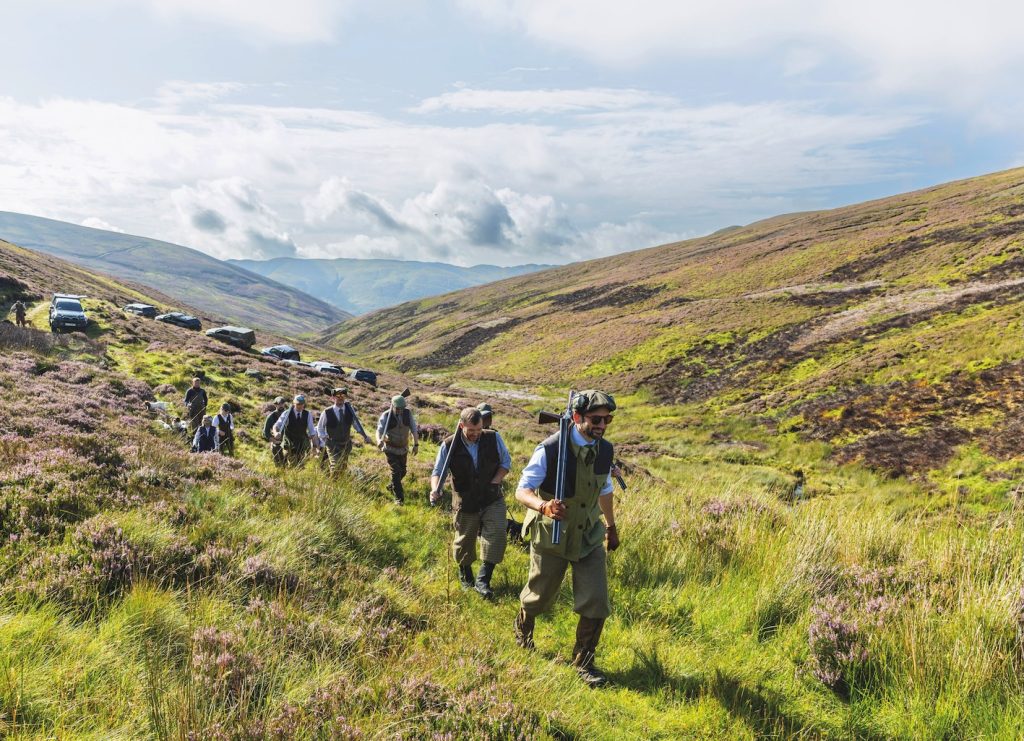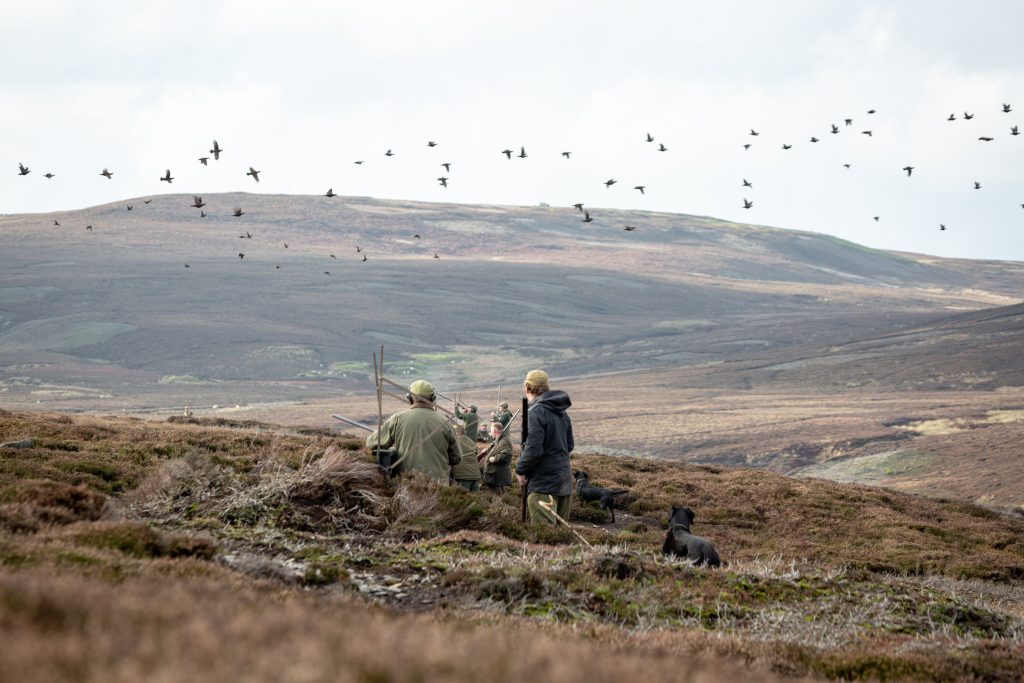High game
Stalking wild and intriguing capercaillie in the Swedish tundra.
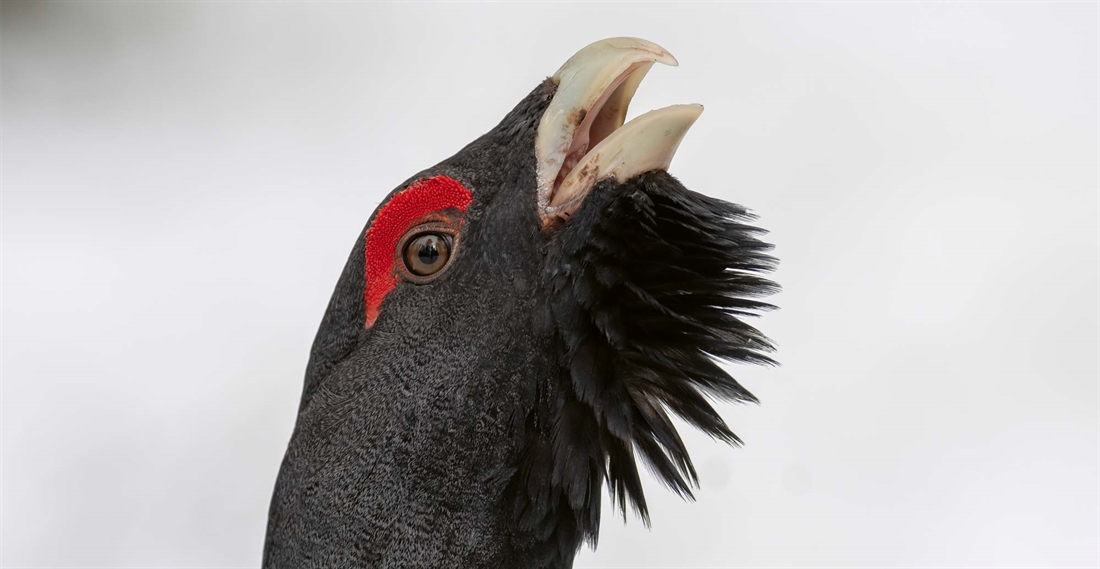
Once upon a time the kingly courts of Europe separated game into two distinct orders: Hochwild and Niederwild. Hochwild, or high game, was the preserve of the nobility. Niederwild, or low game, were the animals that anyone could hunt. All hooved game, apart from roe deer, were set aside for the nobles. Eagles and capercaillie were the only birds to be included on the list of high game.
Whilst times have changed, the capercaillie retains the status of an exclusive and precious quarry. In the Alps, hunting quotas help to preserve them, limiting most estates to harvesting just one cock bird per year. Hunting has been stopped completely for capercaillie in the Carpathians. Only in the desolate tundras of Scandinavia and Russia do these, the largest bird in the grouse family, still truly thrive.
Ever since I first spotted a capercaillie in the Tyrolean hills I’ve been captivated by them, but equally frustrated about how I might hunt one. Then I was introduced to a form of internet dating: a website where I could advertise my abundance of muntjac, and hope to swap this stalking in return for a hunting trip elsewhere. Capercaillie was top of my list, and I fired emails to a handful of potential suitors. Christian was the first and friendliest to respond, and we agreed that my wife and I would visit him in January. He and his friend Wictor would come for the return fixture, in Suffolk, in early spring.
There are many ways you can hunt capercaillie. In Austria they are stalked in springtime as they lek. For a few seconds, as they tilt their head backwards and call, they are momentarily deaf and blind. In this brief window you creep unseen from tree to tree until you are in range: a game of ‘grandmother’s footsteps’. You can also pursue them with dogs, who tree them much like a big cat, or you can walk them up. They can even be driven, although it is one of the most exclusive invitations on earth. Driven capercaillie takes place on just one day a year, with the King of Sweden often among the guests. The record in modern times was in 2010, when they managed 16.
The time of year and weather conditions dictate the approach. This year there had been the deepest snowfall in living memory. As we wound our way north from Stockholm to Christian’s home in Hälsingland, the land became completely white, submerged by a 16m-deep snow pack. Our only option was to stalk our quarry on skis, using a .308 rifle and 150gr, full metal jacket rounds.
Our first morning was a bitterly cold -16ºC. Christian, Wictor, my wife Georgia and I donned white snowsuits and drove deep into the hunting area. For some time a young moose, unwilling to deviate into the deep snow on the right or left, jogged along the track in front of us.
While attaching my skis, Christian cautioned, “Hunting these birds is not easy. I can almost guarantee you a black grouse, but a capercaillie is different. You may only get one chance these three days, so you must take it!” With that warning, I instantly fell over. Forest skis are slightly wider than normal cross country skis.
My wife, upright, glided past me. It wasn’t long, though, until we were all sailing through the trees. It is a magical way to see the tundra.
Before we’d gone much more than half a kilometre, Christian’s trained eyes spotted a capercaillie. He was astonished to see one so soon. Capercaillie have the keenest hearing and sharpest vision of any gamebird, so a careful approach is key. With such recent snowfall, every tree was heavily laden, its branches arching towards the ground. The very top is the only bare patch, exposing the pine needles that the birds feed on through winter. They always choose the tallest tree, usually from a clump atop a hill, so that they can put their eyes to good effect, scanning for predators. When you’ve cut your teeth on lowland roe deer, this is an entirely different proposition. There is nowhere to hide. No hedge to creep along and no fold in the land to skirt around.
Leaving Georgia and Wictor behind, Christian and I skied forward from tree to tree as stealthily as we could. At 250m or so it was clear we couldn’t get any closer. I had to take a long shot at a steep angle. I dropped into the snow with my rucksack in front of me. Wiggling around you sink ever further, but it creates an excellent and steady rest. With my crosshairs aligned slightly above the small white dot on its wing, I squeezed. The crack was swiftly followed by the capercaillie taking off and flying unharmed across the valley. Embarrassment and frustration were allayed by Christian, who, ever the gentleman, assured me it was a difficult chance and that he had seen it land on the other side of the valley, atop another towering pine. The hunt was on again.
Crossing the valley was easier said than done. In a short and steep downhill section I lost all control, going so fast I had no option but to collapse into the snow before I met an oncoming tree. I was grateful that the experienced Christian was carrying the rifle. This time a steep bank enabled us to get closer. At 230m the decision was made to take off my skis and crawl the final 30m to the edge of the clearing. This was agonisingly slow and difficult.
With every step I sank up to my waist, more snowplough than stalker. Red-faced, exhausted and with Christian’s warning about taking one’s chances echoing in my head, I settled down for the shot. The bird wasn’t alert and I had time to steady myself after my marathon. I still was unsure on range, but it was closer. With a little less elevation, I shot. Nothing but the quick turning and uncertain head of the bird. I cycled the bolt and shot again. It flew off, unscathed. My heart sank, and schoolboy English came back to me, “A rangefinder, a rangefinder! My Kingdom for a rangefinder!” I knew that I had missed a golden chance. Christian, Wictor and Georgia, all agreed. I put on an apologetic and hopeful face. We skied on in search of another bird. I prayed we would see one more. And pushing my luck, prayed we could get to within a more achievable range.
Twenty kilometres later and the sun was setting over the forest. We had skied up hills, crossed frozen lakes, and melted snow to make sustaining coffee. Christian and I tried one last, birdless, detour on our way back to the truck. Wictor and Georgia took an alternative route. As we skied the last few hundred metres along the forest road, Christian explained that the capercaillie would probably have flown down from the trees by now and buried themselves in a snowdrift – the warmest place in this freezing land – to sleep the night. Then, as we rounded the last bend, there, in a clump of trees, sat three capercaillie: two in one tree and the third a little way behind. Christian was silent. It was the latest he had ever seen them feeding. I couldn’t believe it, but after two earlier misses I was also terrified: what would they think if I missed again? The lay of the land gave little reassurance. It would be a similarly long shot. The stalk wasn’t as arduous as before, mostly along the compacted track. I steadied myself and discussed the range and where my holdover should be.
It was an anxious guess, but more considered than my previous chances. As I fired, the two birds together flew off. Reloading, I took aim at the third bird, pulled the trigger and watched it fall into the thicket below. My relief was short-lived. “We must go now. It’s almost dark and those bushes are incredibly thick,” Christian said softly. My bird lay in the middle of a dense grove of young pines that ran along a steep bank. Searching and trying to go uphill on the skis was not easy. Getting up after I’d fallen into the deep snow was even harder. Cresting the ridge I called to Christian to come towards me. I saw the capercaillie, lying in a crater of snow.
Returning to the truck we discovered that Wictor had also been successful. A brace of capercaillie to finish a day of much skiing, through a unique and stunning landscape, is a just cause for celebration. That evening I prepared capercaillie carpaccio for my new friends. The meat is intensely dark, and has a taste that compares to red grouse, but with a citrus kick at the end, thanks to its diet of pine needles.
Over moose backstrap and some tundra mushrooms – an exquisite but poisonous fungi that must be prepared with expert precision – we relived the day. While the notion of stalking a bird up a tree with a powerful rifle may be anathema to those who consider a curling pheasant the apogee of fieldsports, my aching legs and tumultuous memories of the day told a different story. Stalking the wild and intriguing capercaillie in the Swedish tundra is a truly exceptional challenge and one of life’s rare experiences.
Related Articles
Get the latest news delivered direct to your door
Subscribe to Fieldsports Journal
Elevate your experience in the field with a subscription to Fieldsports Journal, the premium publication for passionate country sports enthusiasts. This bi-monthly journal delivers unparalleled coverage of game shooting, fishing and big game across the UK and beyond.
Each issue offers a stunning collection of in-depth features, expert opinions and world-class photography, all presented in a timeless yet contemporary design.
Save 10% on shop price when you subscribe, with a choice of packages that work for you. Choose from Print & Digital or Digital only with each journal delivered directly to your door or via the app every other month, plus access to past issues with the digital back issue library.



